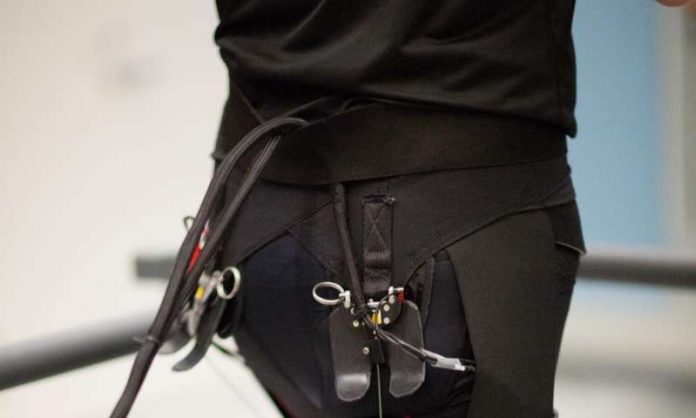
A team of scientists from Harvard John A. Paulson School of Engineering and Applied Sciences, or SEAS, and Wyss Institute, both at Harvard University, have created a new type of soft exosuit that decreases the metabolic output associated with running by 5.4 percent, according to their study published in Science Robotics.
The soft exosuit technology Harvard researchers pursue is unique in its focus on using soft, lightweight materials, like fabric and wires, to enhance human movement, rather than heavy metal actuators or shells. The exosuits have a variety of purposes depending on placement and goals. According to the Wyss Institute, they can add mobility in the elderly, stroke patients, those with multiple sclerosis, or Parkinson’s disease and help soldiers or farmers move heavy loads or run faster.
Most of the time the devices enhance mobility by working in combination with the natural motion of the human body but the new suit, designed to aid running or in the rehabilitation of athletes after an injury, works a little differently.
The study experimented with two different ‘profiles’ when choosing the placement and action of the wires. One profile, based on previous research from Stanford University, applied assistive force later in the runner’s stride, while the other profile applied force at an earlier point that aligns closely with what happens naturally when a runner runs. The Harvard team found that when the force was applied later in the stride, it had positive results on knee and foot effort as well, whereas the biologically aligned profile did not, proving that slavishly mimicking biology when it comes to wearable tech is not necessarily the most effective approach.
At the moment, this new suit is tethered to an off-board actuator unit which houses the power supply, motors, and electronics required to operate the suit, meaning that it can only be used in a facility where the unit and treadmill are close in proximity. However, with more research, scientists hope to create an untethered version of the suit soon.
This video explains how exosuit technology developed at the Wyss Institute for Biologically Inspired Engineering and applied to ankle movements helps patients post-stroke regain a more normal gait. Credit: The Rolex Awards / Wyss Institute at Harvard University
More News to Read
- New Machine Learning Software can Imitate Human Emotional Response
- NASA Discover Importance of Low-Frequency Wave to Increase Satellite Longevity and Performance
- How do Social Settings Affect Human’s Decision-Making?
- Possible Evidence of Majorana Particle Could be BIG News for Quantum Computers
- A Study on Marsupials Helps Scientist Better Understand Pregnancy in Humans
